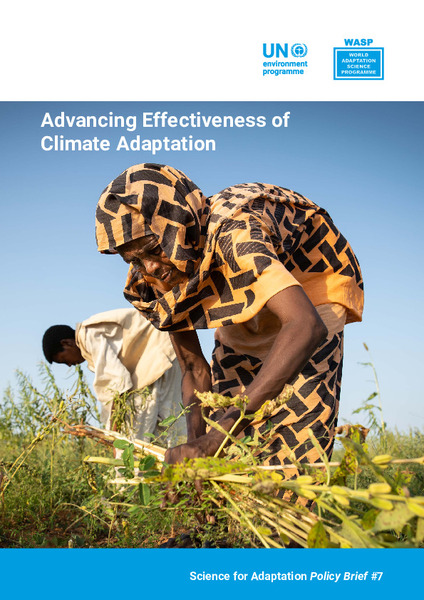Browsing Policy Briefs by Country/Region "Global"
Now showing items 1-7 of 7
-
Advancing Effectiveness of Climate Adaptation - Science for Adaptation Policy Brief #7
(United Nations Environment Programme, 2023-10)Evaluating the effectiveness of adaptation policies and actions is important to advance the scale and scope of climate risk reduction. The goal of this WASP Sciencefor-Adaptation Policy Brief (SAPB) is to enhance the ... -
Artificial Intelligence (AI) end-to-end: The Environmental Impact of the Full AI Lifecycle Needs to be Comprehensively Assessed - Issue Note
(2024-09)The United Nations Environment Programme (UNEP) is the leading global environmental authority that sets the global environmental agenda, promotes the environmental dimension of sustainable development within the United ... -
Integrating Displaced Populations into National Climate Change Policy and Planning - Policy Brief
(United Nations Environment Programme, 2023-08)The Policy Brief highlights the importance of integrating human mobility, including displacement, in the policies and plans of ministries, departments and agencies responsible for climate, environment and development, ... -
Knowledge Gaps and Policy Needs to Tackle Loss and Damage - Science for Adaptation Policy Brief #8
(2024-11)This Policy Brief contributes to the goal of operationalizing loss and damage solutions and guiding global policies on the issues by identifying potential areas where science can readily support loss and damage solutions. ... -
A Policymakers’ guide to Life Cycle Assessment - Policy Brief
(United Nations Environment Programme, 2024-11)This policy brief focuses on the application of generic Life Cycle Assessment (LCA) studies to inform problem and policy framing. The International Organization for Standardization (ISO) defines a life cycle as “consecutive ... -
A policymakers’ guide to Life Cycle Assessment - Policy Brief (Coming soon)
(United Nations Environment Programme, 2024-11)This policy brief focuses on the application of generic Life Cycle Assessment (LCA) studies to inform problem and policy framing. The International Organization for Standardization (ISO) defines a life cycle as “consecutive ... -
Sustainable production and consumption: Design for disassembly as a circular economy tool - Foresight Brief 031
(2023-10)Circular economy is intended to ensure that resources are kept in the economy and at the highest possible economic value for as long as possible. It therefore enables a more efficient use of embedded materials after their ...








